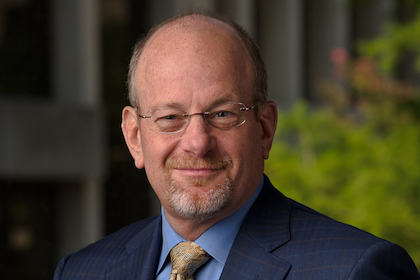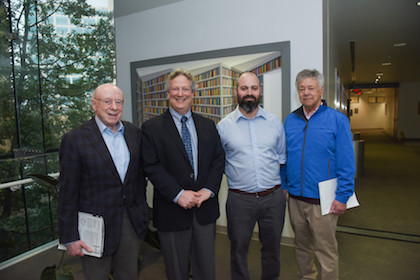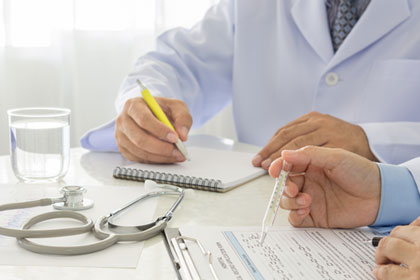Hamon Center makes advances in stem cell and heart muscle regeneration
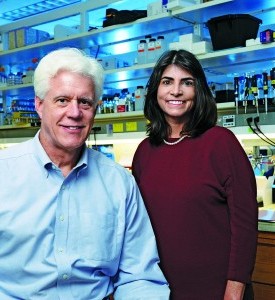
Some organs and tissues, such as skin, bone, and even the liver, can repair themselves after an injury. But following a heart attack, damaged heart muscle is irreparably scarred. Research conducted at UT Southwestern’s Hamon Center for Regenerative Science and Medicine could potentially change that someday, dramatically improving the possibilities for recovery from a heart attack.
In its first full year of operation, scientists affiliated with the Center published research that not only pointed toward a potential path for regenerating heart muscle but also advanced our understanding of stem cell division.
“The goal of this Center is to understand the basic mechanisms for tissue and organ formation, and then to use that knowledge to regenerate, repair, and replace tissues damaged by aging and injury,” said Dr. Eric Olson, Chairman of the Department of Molecular Biology, who leads the Center.
The Center, established in 2014, was made possible by a $10 million endowment gift from the Hamon Charitable Foundation.
“We expect the Hamon Center to be a source of transformative advances in regenerative science and medicine,” said Dr. Daniel K. Podolsky, President of UT Southwestern, who holds the Philip O’Bryan Montgomery, Jr., M.D. Distinguished Presidential Chair in Academic Administration, and the Doris and Bryan Wildenthal Distinguished Chair in Medical Science. “Already, Dr. Olson’s discoveries have provided profound insights into basic mechanisms underlying altered cardiovascular function in disease.”
This past year, Dr. Hesham Sadek, Associate Professor of Internal Medicine, made important advances toward the goal of heart muscle regeneration. Heart muscle is not regenerated following a heart attack or other significant damage, but a low level of heart muscle cell proliferation occurs regularly to replace the effects of normal wear-and-tear. Dr. Sadek and colleagues identified a cell type that replenishes adult heart muscle.
“Now we have a target to study. If we can expand this cell population, or enhance its ability to divide, then we can make new muscle cells,” said Dr. Sadek, who holds the J. Fred Schoellkopf, Jr. Chair in Cardiology.
In other words, it might be possible one day to coax these special cells into dividing enough to repair the heart following a heart attack.
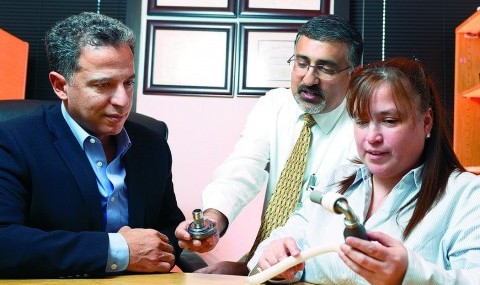
In a related finding, Dr. Pradeep Mammen, Associate Professor of Internal Medicine and Integrative Biology, Dr. Sadek, and others also found evidence that left ventricular assist device (LVAD) machines may create an environment that promotes regeneration of heart muscle. LVADs are implanted in patients awaiting heart transplants to assist with pumping blood.
To further that research, Dr. Sadek is establishing an LVAD center to conduct clinical trials to show more definitively whether these devices promote heart muscle regrowth. Dr. Sadek hopes to follow 20 patients for the first study. This research effort is supported with funding from the Hamon Center and the collaboration of Dr. Pradeep and Dr. Mark Drazner, Professor of Internal Medicine, Medical Director of the Heart Failure, LVAD, and Cardiac Transplantation Program, and holder of the James M. Wooten Chair in Cardiology.
In stem cell research, Dr. Michael Buszczak, Associate Professor of Molecular Biology, and colleagues identified a mechanism that helps explain why stem cells undergo self-renewing divisions but their offspring do not. Adult stem cell division provides a ready supply of new cells needed for homeostasis throughout the life of an organism, but it must be controlled. Too much stem cell reproduction can lead to cancerous growth and too little results in inadequate cell renewal and underlies the aging process.
"We discovered that stem cells form microtubule-based nanotubes, which extend into specialized environments called niches. These threadlike nanotubes act like straws to tap into the niches and allow signaling to occur specifically in the stem cell,” said Dr. Buszczak, who is an E.E. and Greer Garson Fogelson Scholar in Medical Research.
“The Hamon Center for Regenerative Science and Medicine is making important advances in basic stem cell biology as well as in the development of new therapeutic strategies for heart, muscle, and neuronal diseases,” said Dr. Olson, who holds the Annie and Willie Nelson Professorship in Stem Cell Research, the Pogue Distinguished Chair in Research on Cardiac Birth Defects, and The Robert A. Welch Distinguished Chair in Science.
“Going forward,” he added, “we will continue to interlink basic scientists and clinicians across the campus to advance the latest discoveries in regenerative medicine and improve human health.”

